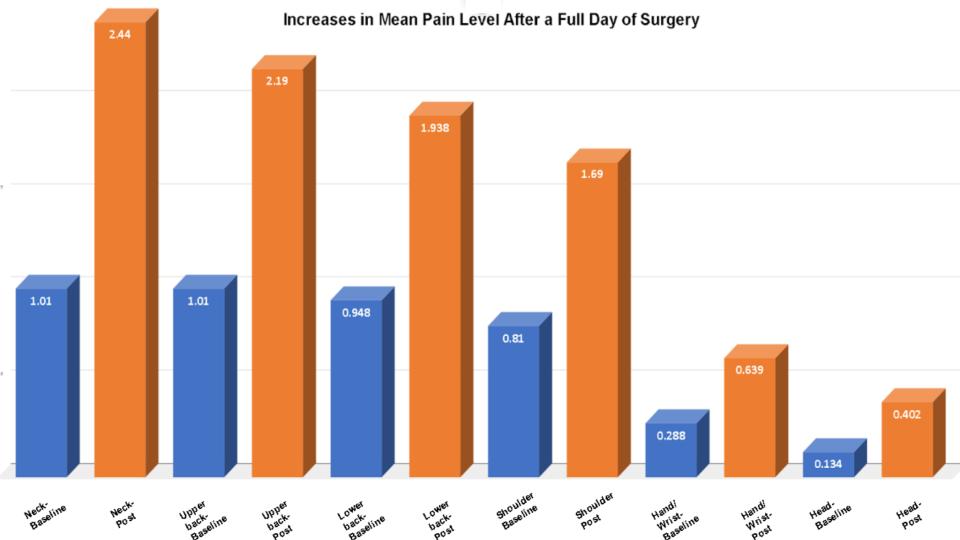Urology Resident Surgical Ergonomics
Brandon Childs, MD1, Cristina Vega, BS2, Arthur Mourtzinos, MD1.
1Lahey Hospital and Medical Center, Burlington, MA, USA, 2Tufts University School of Medicine, Boston, MA, USA.
BACKGROUND: Surgery is a physically demanding occupation which can lead to the development of musculoskeletal pain (MSKP). These injuries can inflict long-term physical, emotional, and economic consequences. Surgical ergonomics has been an understudied topic within the field of urology and specifically during residency education. We sought to further characterize urology residents' knowledge and experiences regarding surgical ergonomics.
METHODS: An online survey was created to assess topics such as work-related pain, provoking factors, and ergonomics education. This questionnaire was sent by email to all accredited urology residency program directors listed on the American Association of Urology website. This was then disseminated to eligible residents.
RESULTS: We received a total of 98 responses (66 male- 67.3% and 32 female- 32.7%). Mean age and post-graduate year were 30.3 years and 3.2, respectively. Work-related MSKP was reported in 64.3% of respondents. Of all residents, 60.2% plan to pursue fellowship, and 10.4% stated that subspecialty choice was influenced by work-related pain. 74.5% affirmed that their program does not address surgical ergonomics. Procedures which most commonly led to MSKP were open-pelvic (56.1%), endoscopic (39.8%), and open-retroperitoneal (34.7%) cases. The greatest increases in pain after a full day in the OR were described in the neck, shoulders, and upper back (figure 1). Seven residents stated that work-related pain has either led to operative mistakes or the inability to operate. A total of 42.7% of trainees have used NSAIDs for pain control, many as often as 1-3 times per week. Improved ergonomics training was desired in 88.5% of participants in the form of instruction while operating, simulation training, and lectures/didactics.
CONCLUSIONS: Two-thirds of urology trainees have experienced work-related pain or injuries most commonly reported in the neck, back, and shoulders. There currently exists a substantial opportunity to improve residency education regarding surgical ergonomics with most trainees desiring more instruction to prevent MSKP. 
Back to 2021 Abstracts
